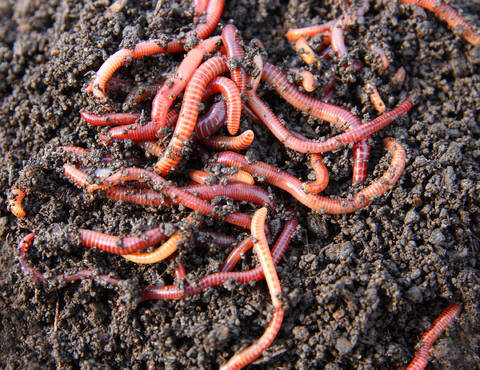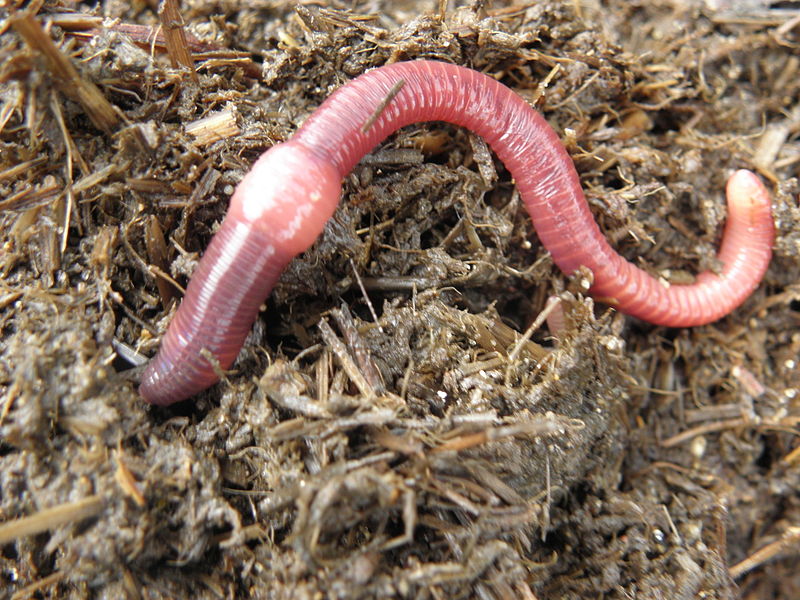Top-rated red wigglers: Use them to reduce waste
How Red Wigglers Can Increase Your Organic Waste Recycling
Red wigglers represent an essential component in improving organic waste recycling, effectively converting daily kitchen scraps and garden debris into important worm spreadings. Comprehending the details of establishing a vermicomposting system and the ideal care for these worms can dramatically magnify the advantages.

Advantages of Red Wigglers
Red wigglers, a kind of composting earthworm, deal various advantages that make them indispensable in natural waste recycling. These worms can process kitchen scraps, garden waste, and also paper products, changing them right into nutrient-rich castings.
Furthermore, red wigglers boost soil oygenation and drainage with their delving tasks, promoting a healthier root atmosphere for plants. Their castings are rich in beneficial microbes and necessary nutrients, cultivating robust plant development and improving soil structure (red wigglers). The use of red wigglers in composting is an ecologically friendly choice to chemical fertilizers, which can have dangerous side results.
Additionally, vermicomposting with red wigglers is a low-maintenance and reliable method of recycling organic waste, making it easily accessible for homes and neighborhoods alike. Their quick recreation price ensures a stable supply for continuous composting efforts, additionally amplifying their advantages. On the whole, red wigglers work as a pivotal component in sustainable waste administration and soil enhancement methods.
Establishing a Vermicomposting System
Developing an efficient vermicomposting system needs cautious preparation and consideration of different elements that contribute to its success. The foundation of a successful system begins with picking an ideal bin. Choices range from commercial bins to homemade alternatives, yet it is crucial that the container is well-ventilated and appropriately sized to suit the variety of red wigglers.
Next, the choice of bedding product is crucial. Appropriate bed linen includes shredded paper, cardboard, or coconut coir, which supplies both a habitat and a source of carbon for the worms. The bed linens must be dampened yet not excessively wet to stop anaerobic problems.
Keeping the ideal environment is essential. Red wigglers grow in temperatures between 55 ° F and 77 ° F(13 ° C to 25 ° C )and call for a pH degree around neutral. Checking dampness degrees is additionally important, as excessive moisture can bring about odor troubles, while too little can dry out the worms.
Last but not least, putting the vermicomposting system in a shaded area secured from direct sunshine will aid keep a secure environment. With these factors to consider in mind, one can successfully set up a thriving vermicomposting system that enhances natural waste recycling.
What to Feed Red Wigglers
Feeding red wigglers the right products is fundamental to keeping a healthy vermicomposting system. These worms grow on a diverse diet regimen primarily composed of organic issue, that includes vegetables and fruit scraps, coffee grounds, crushed eggshells, and shredded paper. It is important to avoid feeding them meat, dairy products, oily foods, or any processed items, as these can produce smells, attract parasites, and bring about an unhealthy atmosphere.
A well balanced diet for red wigglers advertises ideal digestion and nutrient production. Goal for a mix of green materials, high in nitrogen, such as vegetable peels and yard clippings, and brown materials, abundant in carbon, like dried out fallen leaves and cardboard. This equilibrium guarantees a lasting food resource while maintaining moisture levels in the worm container.
Moreover, it is recommended to cut or shred larger scraps to speed up decay and make the food more obtainable to the worms. Frequently checking the intake price will certainly help figure out the proper amount to feed, avoiding overfeeding and keeping a thriving community. By offering an appropriate diet, you not only sustain the health and wellness of red wigglers however additionally enhance the effectiveness of your vermicomposting efforts.
Maintaining Your Worm Bin
To make sure the health and efficiency of your vermicomposting system, maintaining your worm container is vital. If it becomes also damp, excess wetness can lead to anaerobic problems, harming your worms.
Temperature level is an additional critical aspect. Preferably, the worm bin need to be kept in between 55 ° F and 77 ° F(13 ° C to 25 ° C) Severe temperatures can worry or kill your worms. To achieve this, position your container in a climate-controlled environment away from direct sunlight or warm resources.
Carefully transforming the bed linens with a yard fork every couple of weeks will help freshen the product and prevent compaction - red wigglers. If this occurs, decrease feeding and add more carbon-rich products like shredded paper or cardboard.
(red wiggler compost bin)
Using Worm Spreadings in Gardening

Worm castings, frequently referred to as "black gold" by gardeners, are a highly nutritious natural fertilizer that can significantly enhance dirt wellness and plant development. These castings are generated by red wigglers as they absorb raw material, resulting in a rich, dark, crunchy material bursting with helpful microbes.
Integrating worm spreadings right into garden soil boosts its framework, oygenation, and dampness retention, producing an ideal environment for origin advancement. The high nutrient web content of worm spreadings, consisting of nitrogen, phosphorus, and potassium, contributes to vigorous plant development and enhanced yields. Furthermore, worm castings consist of vital trace minerals and enzymes that advertise the general health and you can find out more wellness of plants, allowing them to better withstand bugs and illness.
Worm spreadings can be applied directly to the dirt or mixed right into potting mixes for container horticulture. A slim layer spread over yard beds or included in compost heap can likewise enhance the microbial task and nutrient profile of the compost. As a sustainable and green fertilizer alternative, worm castings support natural horticulture methods while reducing dependence on synthetic fertilizers, consequently promoting a much healthier environment.
Verdict
To conclude, the assimilation of red wigglers into natural waste reusing practices provides a viable option for boosting soil wellness and promoting sustainable horticulture techniques. By efficiently decaying cooking area scraps and garden waste, red wigglers add to nutrient-rich worm castings that improve soil aeration and moisture retention. This environmentally friendly strategy not only decreases garbage dump payments however additionally lessens the dependence on chemical fertilizers, eventually cultivating much healthier ecosystems and accountable waste administration methods.